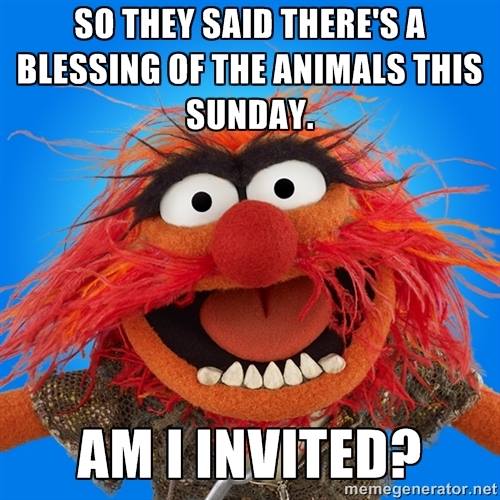So many platforms, so little time.
Recently, the Church of England offered a digital guide to smartphone apps that it suggested “might be of use to your church.” Looking at the list, it’s not that they weren’t good but we here at the Café thought these “new” apps that might be useful for folks who are already working in basic platforms, but they’re not well-known or highly populated. Though well intentioned, we felt that the C of E is doing a bit of a disservice to its people if it’s suggesting these as places to start, and it’s not just a matter of social media literacy for communicators and clergy, it’s a matter of social media presence for congregations. So with that in mind, here’s our suggested social media toolkit for telling your church’s story to as many people.
Social media trends come and go. Five years from now, the social media landscape will most likely look very different (especially with the advent of physical/virtual world-straddling games like PokemonGO and the increasingly social models adopted by content platforms such as YouTube). For the here and now, what follows is a list of highly populated and easily navigated social media platforms – platforms that make sense for small- to medium-sized parishes – that we recommend, and we welcome you to let us know how you’re using these, and what other platforms you might be using that aren’t listed here! Add your ideas in the comments below or on our Facebook page.
A few notes:
- social media is about conversation and content. Don’t adopt a social media platform for the sake of being there. Make sure you have something to say using it. At the same time, go where the people are – this is as true in virtual-world ministry as it is in physical-world.
- Even if Facebook is your mother’s social media platform – it is your mother’s social media platform. She’s there, and a lot of others in her demographic, and (though they may not admit it) a fair amount from the younger generation too.
THE BASICS
Website
This is your home base on the internet. Make sure it’s up to date, photo-heavy and populated with people rather than steeples. Your homepage should include these four things front and center (put them in the “About” Box on your Facebook page too)
- Service Times
- Address
- Phone number
- An invitation to come and be part of your church
Consider a blog, and make sure you have regular contributors to keep them going on a week-to-week basis. If your priest is contributing, make sure it’s not a second sermon for the week. Blogs are personal, conversational – they expand and build on what’s being talked about offline.
Use your social media as
- channels for your website content (e.g. anytime you post a blog, send the link out through your social media platforms – tweet it, post it to Facebook)
- a listening ear and a forum for ministry – to your parishioners, to your surrounding community
- a voice for your parish in local, regional or national conversations
- carefully, an advertising tool to get the word out about events, classes and worship services
- a support system for your parishioners, your diocese and your community partners. Like, retweet, comment or or share posts from other pages.
Facebook: 1,590 million active users
For many parishes, a Facebook Page functions as online coffee hour and revolving bulletin board. Some businesses have abandoned a traditional website entirely for a Facebook page, which includes contact information, photo albums and calendar, and has constantly changing content.
Invites are a great tool for getting the word out about special events and worship services – encourage your staff and parishioners to share and invite others. Test frequency of posts and kinds of posts – I thought my parish might be overwhelmed by more than one post a day, but I’ve found that days with as many as three posts show even more engagement. Different congregations have different personalities and levels of involvement.
Photos are popular, so are sermon links. I’ve started creating memes with our rector’s signature bad jokes to run on Fridays, which are generally low-traffic. Theological discussions do not take off here, sadly, though our parish likes to talk about theology in the physical world. A possible second outlet for this: a Facebook group.
Acknowledge parishioners who post on your page or who check in to your location, with a like, a welcome or a comment.
Twitter: 320 million active users
The Episcopal community is strong on Twitter – priests, bishops, dioceses, parishes, youth groups, parishioners. It’s a good place to connect with that community at a local, regional and national level. Twitter done well requires more real-time maintenance than a Facebook page – a typical day on Twitter might involve as many as 10 tweets, more if you’re actively participating in a conversation or chat.
In the introduction to Meredith Gould’s The Social Media Gospel (a really good resource), the Reverend David L. Hansen of St. John Lutheran Church of Prairie Hill in Brenham, Texas, writes:
“Social media is both a stethoscope … and a megaphone.”
That’s a really good way of thinking about it. Twitter gives you a finger on the pulse of your community, and it gives you another voice in the virtual world.
Use hashtags whenever relevant – #episcopal is widely used – see what hashtags are used in your community (I hop on #Memphis or #choose901 whenever I’m tweeting about something that may be of interest to our parish’s immediate vicinity). If you’re tweeting out a sermon that touches on current events, look for trending hashtags. Hashtags help draw your Twitter voice into wider conversations, and put you in front of more eyes.
Instagram: 400 million active users
Instagram emphasizes the visual – its power is in image, but more and more content is being attached to those images. It can get hashtag heavy, so go easy. Right now, it doesn’t hyperlink, which is unfortunate. Instagram has started adding a short video option similar to Vine. The images you upload create in an immediate and wordless way a personality for your parish, so choose your photos carefully, and build a feed with friendly faces and a variety of color and content. This is not the place to post 15 pictures from the most recent concert or benefit event. Save those for Facebook albums, and post one or two strong ones on IG.
ADDITIONAL PLATFORMS TO CONSIDER
Depending on the interests and personality of your congregation and surrounding community, you might consider a few other well-established platforms:
Pinterest: 100 million active users
Pinterest is a favorite among the DIY, craft and interior-decorating crowd, but its users don’t stop there. It’s Instagram with a focus on idea- and inspiration-sharing through topical boards. Be creative in what you might share on Pinterest – create boards for religious icons, book recommendations, memes, youth pilgrimage photos or inspirational quotes. What resources can you provide?
YouTube: more than 1 billion users
YouTube started as a content-posting and –sharing platform and it has evolved into a social media platform itself. Even if you’re not creating video, you can use YouTube – create playlists of music, share and respond to video from community partners, share content from national/international-level Episcopal Church entities, share content that’s of interest to your parishioners.
Note: If you’re recording audio but not video from sermons, speakers, etc., a great tool called Tunes to Tube exists – tunestotube.com – which allows you to combine still images with audio files (.mp3) to create YouTube videos (thanks to the Tennessee-based Speak Creative, our web developer, for helping me find that solution).
Vine
Vine allows anyone with a smart phone to create six-second videos – these can be snippets from a church service or special event. Some of the most amusing ones I’ve managed have included our rector doing karaoke with the youth and a mash-up of a Faure Requiem rehearsal and a Zumba class that were both happening in the church simultaneously one evening last year.
EASY TOOLS FOR MAKING STUFF LOOK GOOD
Most social media posts will be stronger if they involve an image. There are ways to create visuals quickly, and ways to easily edit mediocre photos:
Instagram’s filters are much more varied than Facebook’s, and while most of them scream “Instagram filter!” as soon as they are applied, the results are interesting and sometimes kind of hip.
Canva is a mostly free tool for dropping text onto images and creating things like Facebook banners. If you use one of their images, it might cost you a dollar or two, but you can also upload your own. The platform itself can be a little cumbersome, but once you get used to navigating, it offers a lot of creative possibilities.
Memes: A sense of humor is such a good thing in a social media presence, including and especially a church presence. Humor does not need to mean snark. One great tool: MemeGenerator.net. I use it to create visual versions of our rector’s signature bad jokes, which he includes every Wednesday morning (except during Lent) in a 60-second, free subscription phone call which also includes a brief reflection on the week’s scripture and an announcement or two.

There’s also the Keep Calm-O-Matic, where you can create your very own “keep calm” meme

Images & Photos: An iPhone will take an excellent, high-resolution image that’s often big enough to enlarge for a gallery or a magazine cover. Use available light whenever you can, avoid the flash unless you really need it and know how to use it, and shoot several images at a time, both horizontal and vertical. Horizontal options are usually the most flexible and more effective in social media.
Here are sources for free photos beyond what you shoot:
PLATFORMS THAT ARE GETTING SOME PRESS
I have not investigated several platforms that deserve some investigation, including Snapchat. Live streaming is also eliminating the need for heavy video editing time (though iMovie makes that a lot less cumbersome) – Facebook Live, Periscope and YouTube Mobile Live Streaming seem to be the top options. Who’s used any of them? How? Has it been useful?

